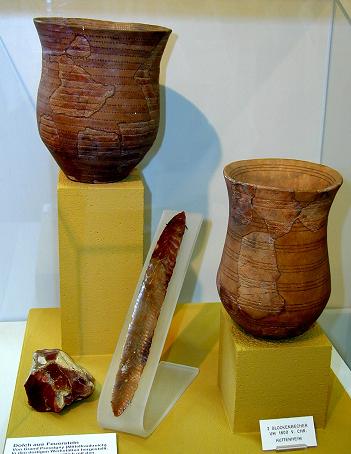Archaeology and Genetics Study Supports Genesis
Although archaeologists and geneticists tend to get along like farmers and cattle barons in the Old West, there are times when their work can have an uneasy truce. There was an ancient group known by an unflattering name. Do the Beaker people ring a bell? Actually, it's worse: Bell Beaker. Although they migrated and did some conquering along the way (and displaced 90 percent of the Britons), they are known for their pottery. While pottery is important to archaeologists, it also raises questions about travel, cultural assimilation, borrowing styles, trade, and so on.
Was there only one Beaker culture that did all that traveling and raising hob? There are examples of their pottery in diverse areas, and genetic research seems to support that there were two Beaker groups. While the secular study plugged in the standard ages of man from evolutionary to prop up the deep-time narrative, they did mine some important information.
Even more interesting is how the data fit the Genesis narrative of the dispersal at Babel. Also, the Beaker folks seemed to be doing their migrating thing during the post-Flood Ice Age until a few years afterward.
 |
| Credit: Wikimedia Commons / Thomas Ihle (CC BY-SA 3.0) |
Even more interesting is how the data fit the Genesis narrative of the dispersal at Babel. Also, the Beaker folks seemed to be doing their migrating thing during the post-Flood Ice Age until a few years afterward.
Mass migrations flooded Europe during the post-Babel Ice Age and the early post-Ice Age periods. What was once thought of as a single culture, the Bell Beaker culture has now been shown to have been two distinct cultures which had a unique pottery style that came to dominate Europe. Was this done through conquest, trade or cultural assimilation? The archaeology and the genetics seemed to be at odds on this subject. This article will examine the data and also look at how the Table of Nations in Genesis 10 provides unique insight on this topic.To read the rest, head on over to "The Tug of War Between Genetics and Archaeology".